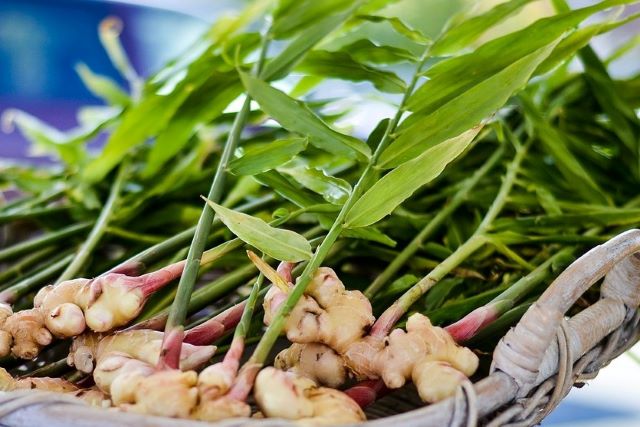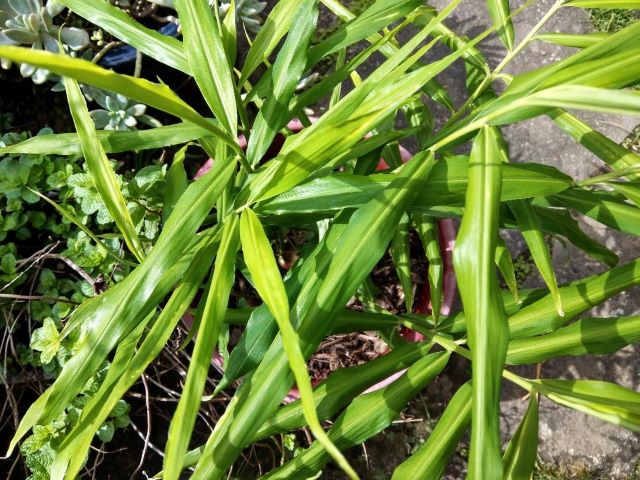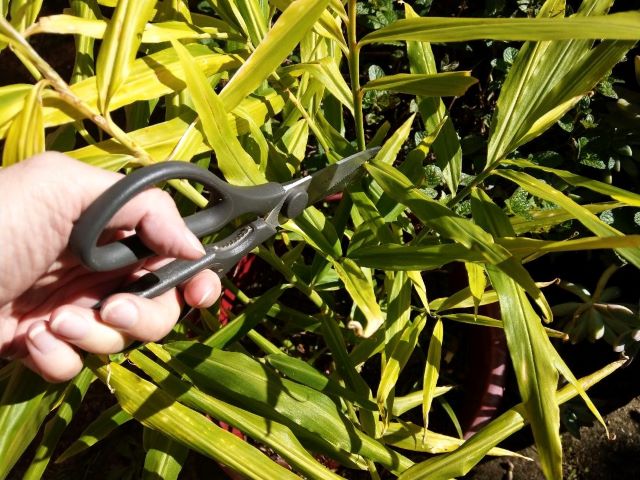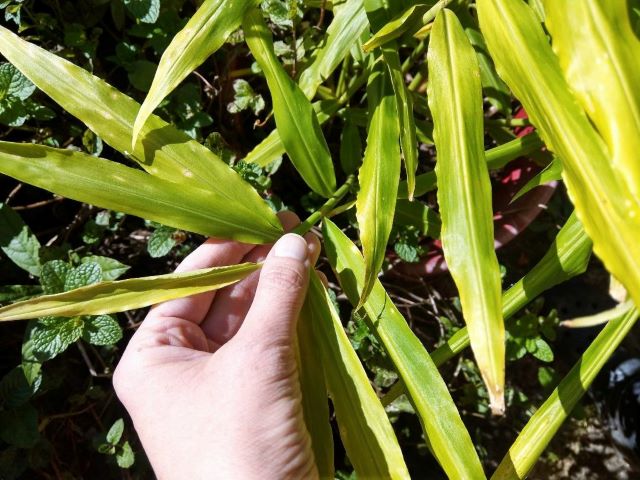When it comes to culinary herbs, most of us are familiar with eating the pungent-tasting root herb, ginger. This tropical plant has become a regular ingredient in many of our recipes. But can you eat ginger leaves?

The good news is that ginger leaves are edible and just as delicious as the ginger rhizome. Ginger leaves are milder in flavor compared to the ginger rhizome. And they offer a delicious alternative while you are waiting to harvest your ginger roots.
Using ginger leaves gives us an additional harvest from our vegetable gardens. And using ginger leaves is a good example of reducing our food waste by eating plants from root to tip.
Table of Contents
Taste Difference Between Ginger Roots (Rhizomes) and Ginger Leaves
Ginger root, or rhizome, has a strong peppery flavor. The addition of ginger has the capacity to transform any dish from being relatively ordinary into something exotic that whispers of a faraway world.
Whereas ginger leaves offer similar taste properties to ginger rhizomes but at a far more toned-down volume.
It’s also important to note that the ginger we are all most familiar with in our dishes is common ginger. Botanically common ginger is known as Zingiber officinale.
There are many other ornamental ginger varieties and though some may still be edible, it is the common ginger that you are after.
Ornamental varieties have different flavors that can’t compete with the punch packed by common ginger.
Eating Ginger Leaves

As with the root, ginger leaves come with a myriad of different uses but with a much less pronounced flavor.
The 1-foot (30 cm) long tapering ginger fronds can also be eaten raw, though mostly they are eaten cooked. Ginger leaves are quite tough. So before eating them raw or cooking them, it’s best to chop them finely with a sharp knife prior to using them.
After that, raw ginger leaves can be used as a fragrant garnish rather than eaten by themselves. Though they can also be used sparingly in salads. Fresh ginger leaves can be steeped in boiling water to create a delicious tasting tea.
Ginger leaves can also be sautéd with onions and garlic, they can be boiled or steamed, and stir-fried. Ginger leaves also make a delicious addition to soups and stews.
Some more common ways of using ginger leaves for eating is by pickling them in vinegar or cooking ginger leaves with soy sauce. Both make a yummy accompaniment to eat with rice dishes.
There aren’t too many published recipes out there using ginger leaves but here is one you might like to try:
Young Bamboo Shoots Stuffed With Pork and Ginger Leaf – from Food and Travel. This delicious and creative-looking dish uses young bamboo shoots that are filled with minced pork, chili, garlic and ginger leaves before being fried.
Harvesting Ginger Leaves

You can harvest your ginger leaves at any time but they will become tougher with age. So you want to harvest ginger leaves before they become too old.
Keep in mind that the leaves supply energy to the ginger rhizome through the process of photosynthesis. For this reason, if you overharvest the ginger leaves, it will negatively effect the growth of the ginger rhizome.
You can prevent this from becoming a problem by just snipping off a few ginger leaves per stem, as and when you need them. So just be mindful not to strip the whole stem of ginger leaves.
Also, when it comes time to harvest your ginger rhizomes, you can cut off whole stems along with their leaves. Ginger stems can also be used and one YouTuber boils the ginger stems to make a syrup. You can see her video at the end of the article where she also steps us through using the ginger leaves for tea.
Harvesting of the ginger rhizome normally takes place anywhere from four to ten months after sprouting.
The longer the ginger plant is allowed to grow, the more powerful the flavor becomes and eight months is regarded as a good harvest time. Usually, depending on the climate, the ginger leaves will go brown and wither, indicating the right time to harvest ginger.
So in order to enjoy ginger leaves, you can be harvesting them throughout the growing seasons as well as at the time of harvesting your ginger rhizomes.
How to Store Ginger Leaves

As mentioned, ginger leaves are best eaten when fresh. With flavors that are less pronounced than those of ginger rhizome, using fresh ginger leaves helps to maximize both flavor and aroma.
Of course, plucking a few ginger leaves and immediately using them is not always an option.
So here are a couple of alternatives that will allow you to incorporate the ginger leaves at any time:
- Finely chopped ginger leaves can be frozen like other soft herbs. Fill ice cubes with the chopped ginger leaves and top with water. Once frozen, you can store the frozen ginger leaves in freezer bags to later use in stews, soups or smoothies when required. They can be tossed in without needing to be defrosted.
- The chopped ginger leaves can be placed in a dehydrator (or low oven) and stored just like ordinary tea leaves or herbs. Dried ginger leaves can be used as tea on their own or added to other ingredients in your cooking.
Benefits of Growing Your Own Ginger
There are a few reasons for growing your own ginger. For starters, although the rhizomes are now readily available in the vegetable section of just about any supermarket, ginger leaves have yet to be discovered by much of the general public. This means they can be hard to come by.
Ginger leaves are best eaten fresh. If you have your own ginger plant you can include the fresh ginger leaves within hours of harvesting to ensure a maximum flavor content. The high levels of antioxidants will also not have diminished as they sit on a shelf for long periods.
If you are unable to utilize the ginger leaves immediately after gathering them, place them in a plastic bag and keep them in the refrigerator.
Finally, when you grow your own ginger you can be sure of what chemicals are used to grow them. And if like me, you prefer to grow and eat organic foods, you can be assured your ginger and ginger leaves will be pesticide-free.
So if you are not already growing your own ginger, you might like to see our article here: How To Grow Ginger: Guide To Growing Ginger At Home.
See how this YouTuber uses ginger leaves for making tea and ginger stems to make a syrup.
Further reading:
